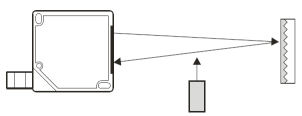Classification and Application of Optoelectronic Sensors in Industrial Automation Control
#news ·2025-10-12 10:23:18
Photoelectric sensors are a general term for sensors that detect objects using light. They function by emitting optical signals from the sensor's transmitting component, which are then reflected, obstructed, or absorbed by the object being detected. The receiving component captures these signals and converts them into corresponding electrical signals to achieve control.
Under normal circumstances, a photoelectric sensor consists of three parts: the emitter, the receiver, and the detection circuit.
Common photoelectric sensors can be categorized into the following types:
1. Diffuse reflection photoelectric sensor
A diffuse reflection photoelectric sensor integrates the emitter and receiver into a single unit. Normally, the receiver cannot detect the light signal emitted by the emitter. When an object passes through, it blocks the light and reflects part of it back. The receiver then detects the light signal and outputs a switching control signal.

Features:
No need to align the optical path during installation and use
Save installation and usage space
Installation and wiring are simple
Large detection area
2. Retro-reflective photoelectric sensor
The retro-reflective photoelectric sensor is a type of photoelectric sensor that integrates the emitter and receiver into a single device, with a reflective panel installed in front of it. It operates based on the principle of reflection to achieve photoelectric control. Under normal conditions, the light emitted by the emitter is reflected back by the panel and received by the receiver. If the light path is blocked by an object being detected, the light signal received by the receiver changes, prompting the photoelectric sensor to activate and output a switch control signal.

Features
Facilitates optical path alignment during installation and use
Compared to through-beam photoelectric sensors, it saves installation and usage space
Installation and wiring are simple
Not affected by the shape, color, or material of the inspected object
3. Contrastive photoelectric sensor
A reflective photoelectric sensor is a photoelectric sensor composed of an independent transmitter and receiver. Due to the separation of the transmitter and receiver, the detection distance of the sensor increases. Its detection distance can reach several meters or even tens of meters. When in use, the transmitter and receiver are installed on both sides of the path through which the object passes, and they must be aligned to establish an optical path. When the object passes through and blocks the optical path, the receiver will activate and output a switch control signal.

feature
Long distance detection, high-precision detection
Can detect small objects
Not affected by the shape, color, and material of the tested object
Using harsh working environments





